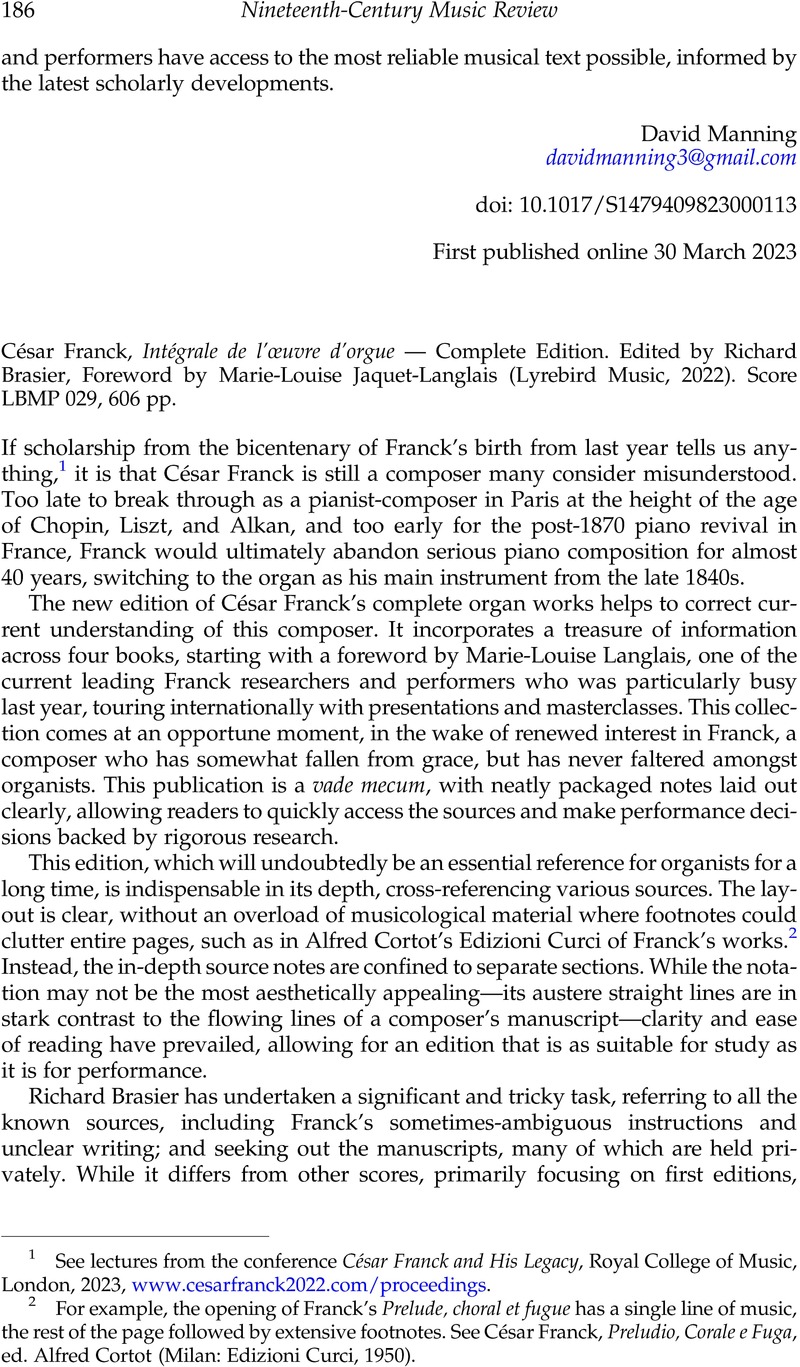No CrossRef data available.
Published online by Cambridge University Press: 17 July 2023

1 See lectures from the conference César Franck and His Legacy, Royal College of Music, London, 2023, www.cesarfranck2022.com/proceedings.
2 For example, the opening of Franck's Prelude, choral et fugue has a single line of music, the rest of the page followed by extensive footnotes. See Franck, César, Preludio, Corale e Fuga, ed. Cortot, Alfred (Milan: Edizioni Curci, 1950)Google Scholar.
3 It is nevertheless surpringing that Verdin's recent research into the subject is not mentioned.
4 See Cortot César Franck, Preludio, Corale e Fuga, 17: ‘the interpreter should not only be a musician: it is even more important that he be a believer’. Why Vincent d'Indy robed his teacher César Franck in unashamedly Christian cloaks as a ‘Pater Seraphicus’, is a much-contested question. The image evoked is one of a caring and gentle religious organist shying away from the limelight, whose unwavering devotion results in his always parting from the organ bench to kneel during consecration – an image which has been burned into the minds of many.